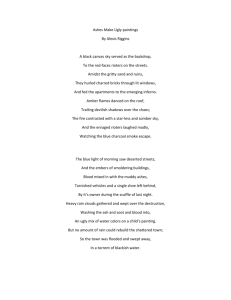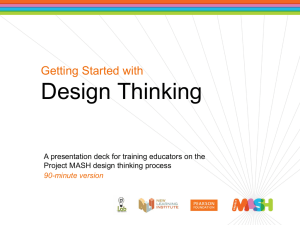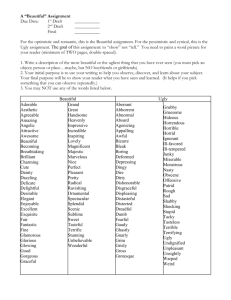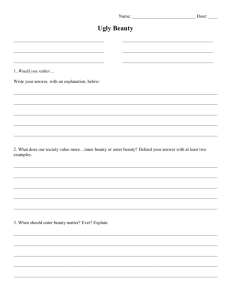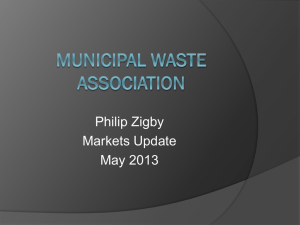Youth and Internet The Good, The Bad, The Ugly
advertisement
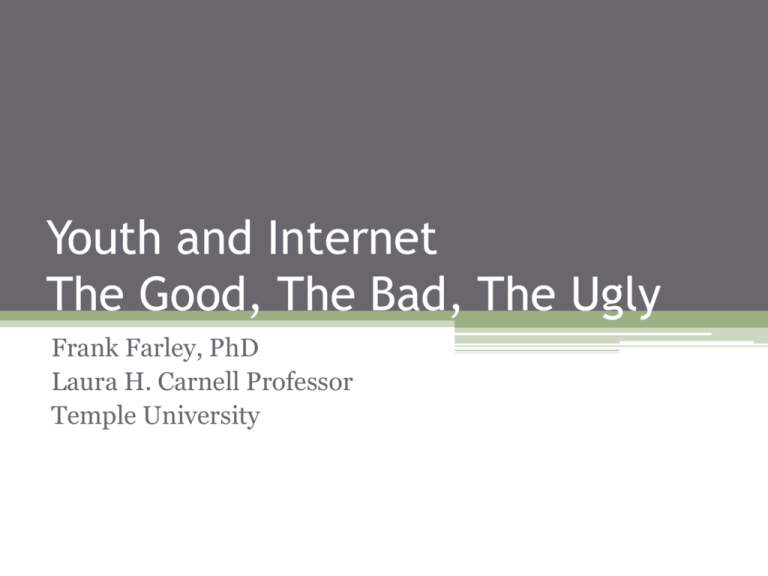
Youth and Internet The Good, The Bad, The Ugly Frank Farley, PhD Laura H. Carnell Professor Temple University Youth and Internet: The Good, The Bad, The Ugly Learning The Good: A world of information is available at ones fingertips. An amazing resource for school work and extracurricular activities. Digital natives now use it as a major source of learning. The Bad: Learning the wrong things, bad information, invalid data, biased sources, wiki world, etc. The Ugly: Youth and Internet: The Good, The Bad, The Ugly Thinking The Good: One can find critiques, arguments, multiple sides to issues, mental challenges, puzzles etc. that can facilitate thinking skills. Some scholars suggest online and other video games may facilitate problem-solving, decision making and cause-effect thinking. The Bad: Get wrong ideas, destructive ideas, dangerous or immoral ideas. Learn biased thinking. The Ugly: Youth and Internet: The Good, The Bad, The Ugly Motivation The Good: Incredible variety and sensory experience can be exciting and motivating, promoting engagement and attention. The Bad: Enhances ADHD? Get distracted from the things you need/should learn or know because of irrelevant stimulation. Get addicted to the technology use and are constantly motivated to be online thus school and other offline pursuits taking a back seat. The Ugly: Youth and Internet: The Good, The Bad, The Ugly Inspiration The Good: Heroes, heroism, and great role models, ideas and inspiration abound in cyberspace. Modeling. Imitation. The Bad: Get inspired by the wrong models and heroes, anti-heroes. Don’t have well developed crap-detectors or moral filters to sort it all out. The Ugly: Columbine killers and Hitler/Nazism online. Youth and Internet: The Good, The Bad, The Ugly Social Life The Good: Shy, introverted, socially phobic find cyber company and friends online. Stay in touch if a friend moves, reconnect with old friends. The Bad: Post personal information, pictures that could haunt forever, ruining a career, a job prospect, a relationship, etc. Employers, universities check you out in online searches. Get “addicted” by constantly checking social networking sites. The Ugly: Predators. Bullying, gossiping, lies that can lead to depression or worse, suicide, in vulnerable youth. Youth and Internet: The Good, The Bad, The Ugly Snooping, Investigating The Good: Find out interesting things about others, new student at school, checking out teachers on “Rate my Teacher”, etc. The Bad: Get in trouble if a snoopee finds out, e.g. a teacher. Find out things you don’t want/need to know, e.g. about parents, friends, relatives, neighbors. The Ugly: Obsessed with others (e.g. ex’s) Youth and Internet: The Good, The Bad, The Ugly Self-Expression, Disinhibition, The Global Me The Good:. Most people like to tell their story if they can, the Internet gives you voice. The Bad: The global platform increases narcissism (“opportunity”). Attracts negativity from others. Your 15 minutes becomes eternal. Brings out the wrong side of people, the putdowns, your own negativity, flaming. The Ugly: Youth and Internet: The Good, The Bad, The Ugly Diversity, Expanding One’s Horizons The Good: Exposure to people different from oneself or one’s community, different religions, life styles, attitudes and beliefs, etc. The global village. The other side of the mountain. The Bad: Learn negative things about other people, other races, other nations, etc. Learn hateful stereotypes. Confirm ones prejudices. The Ugly: Youth and Internet: The Good, The Bad, The Ugly Entertainment The Good: Something of interest for everyone. A babysitter, perhaps nanny, etc. The Bad: Pornography, violence, attainable forbidden fruit, highly engaging. The Ugly: Youth and Internet: The Good, The Bad, The Ugly A Positive Alternative to Negative Offline Behavior The Good: Keeps one off the streets away from dangerous experiences. Keeps one at home (sometimes) allowing for closer supervision. The Bad: The positive alternative becomes worse than the negative offline behavior. Easier to bully online than offline because of anonymity, no fear of direct reprisal, etc. Organize unacceptable offline behavior using online communications. The Ugly: Videotape bad offline behaviors (e.g. beatings) in order to post it online. Examples of Risky Behaviors • Posting Photographs • Posting Personal Information: ▫ School name, last name, city/town • Posting contact information (email address, cell phone number, IM screen name) • Having strangers as “friends” or on buddy list • Visiting chatrooms • Making rude or nasty comments Risky Internet Behaviors Older teens are engaging in riskier behaviors online compared to younger teens. Girls are significantly more likely to post photographs online than boys. Boys are significantly more likely to engage in risky behaviors such as responding to stranger contact, posting personal information and engaging in four or more risky behaviors (a tipping point). Video Games Violence. E.g., Grand Theft Childhood Educational Value MMORPGs ESRB Rating System, EC3+, E, E10+, T13+, M17+, AO18+ VIDEO GAMES Rating Content: Examples Alcohol Content, Blood & Gore, Cartoon Violence, Comic Mischief, Crude Humor, Drug Reference, Fantasy Violence, Nudity or Partial Nudity, Real Gambling, Sexual Content Possible Effects of Violent Depictions Desensitizing Fear/Anxiety Inducing Learning/Imitating Addiction Some Possible Criteria (especially games)(see Smakel et al, 2008). Salience; Mood Change; Tolerance; Withdrawal Symptoms; Conflict; Relapse. Questionnaire Measures. Is the concept valid? The MacArthur Foundation Study (2008) Youth are navigating complex social and technical worlds by participating online. Young people are learning basic social and technical skills that they need to fully participate in contemporary society. Young people are motivated to learn from their peers online. Helpful Websites Connectsafely.org Tips directed towards tweens and teens about posting personal information, social networking and cyberbullying Microsoft.com/protect ▫ Information on filters/monitors ▫ Has contracts about rules for Internet conduct for parents and kids to sign The Cyber Sit-Down

